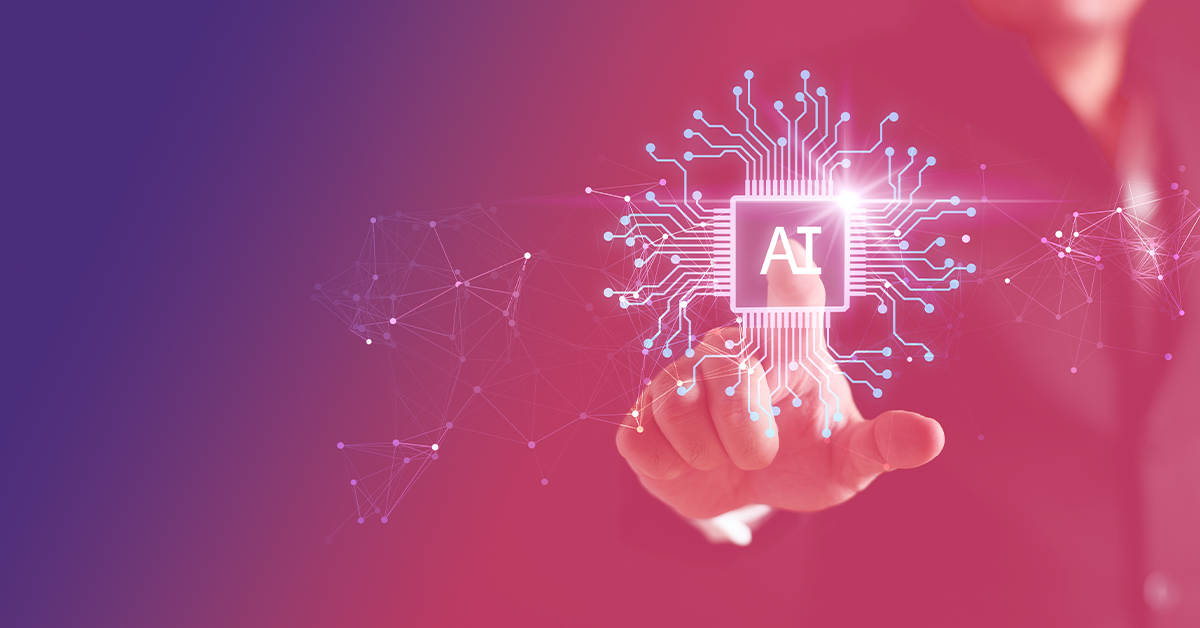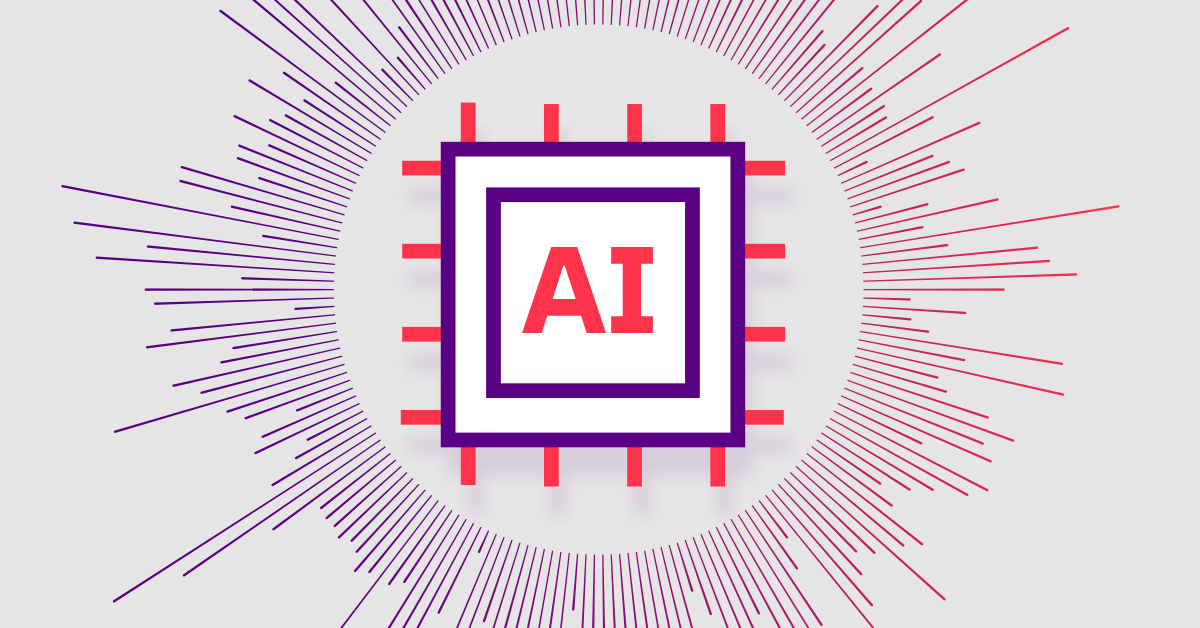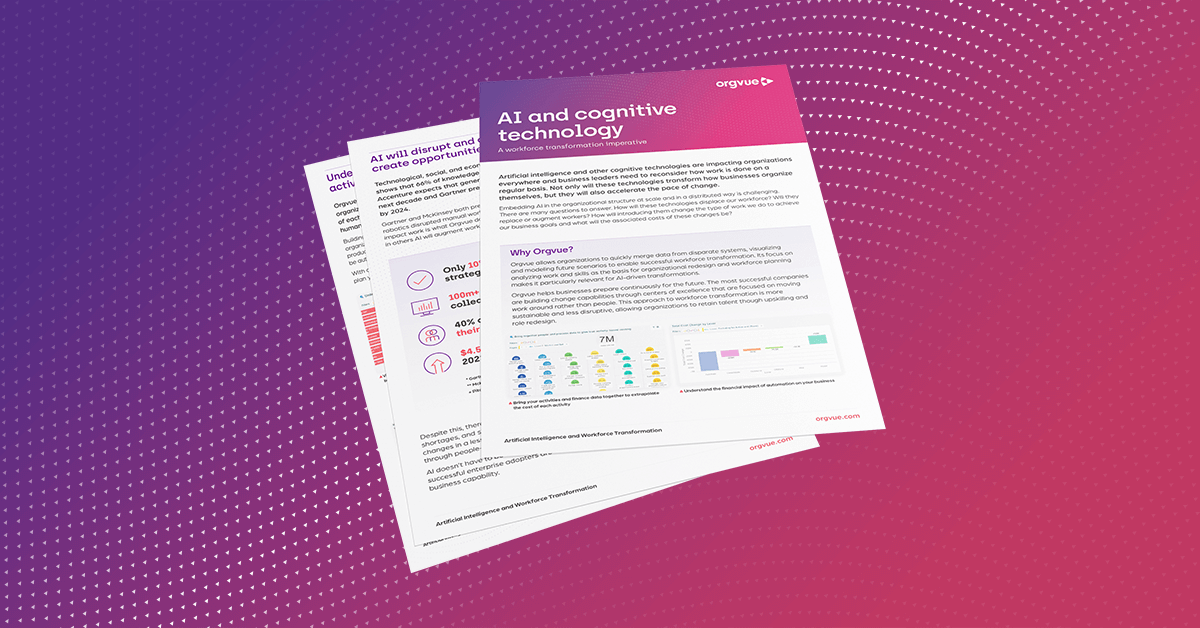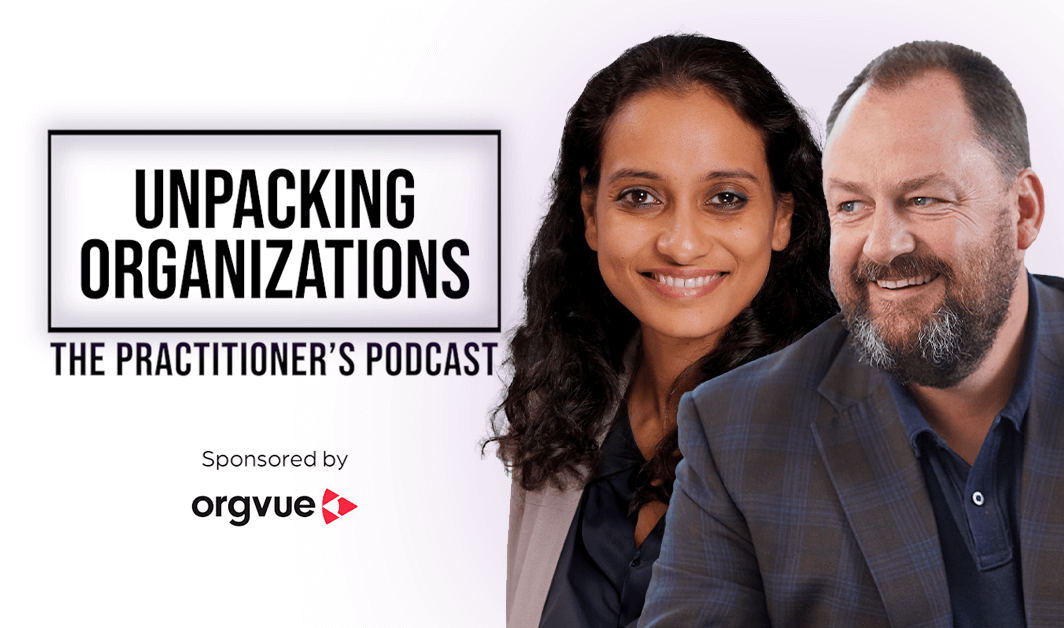Workforce transformation should focus on the work your organization does
Explore the transformative power of AI on workforce dynamics. Discover how focusing on tasks, not just roles, can reshape your organization’s future.
Published by Orgvue
Home > Resources > article > Workforce transformation should focus on the work your organization does
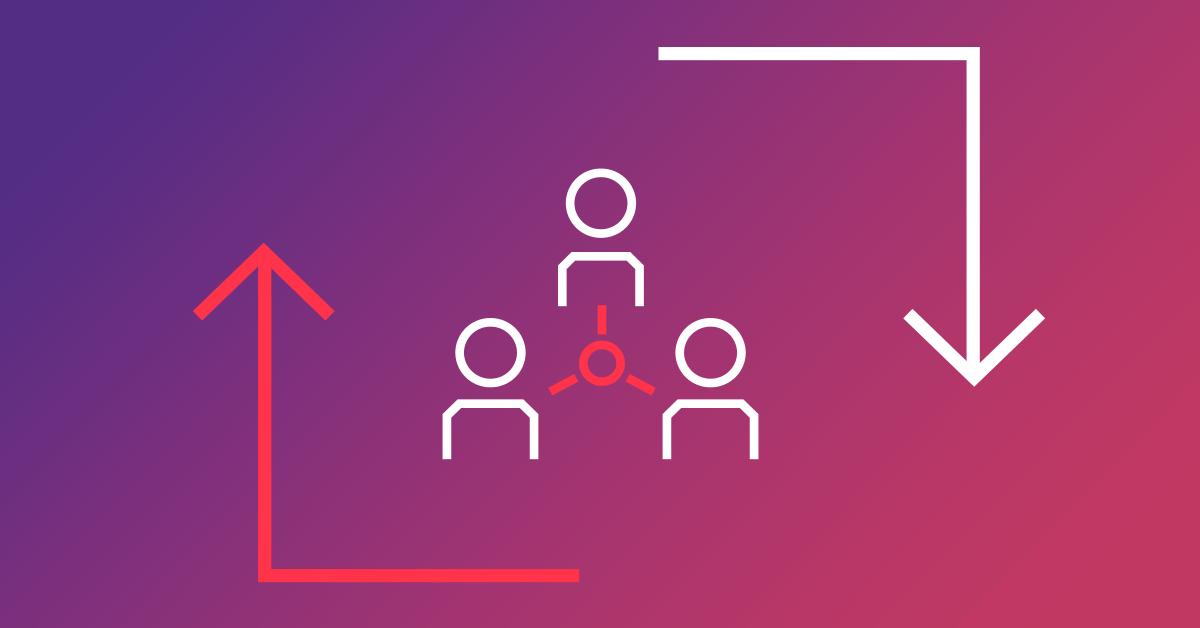
Recent research shows that AI will impact 300 million jobs globally, but that only 25% of the tasks in those jobs are likely to be automated. This means displacing roles and positions in their entirety in nonsensical.
This points to the fact that it’s not roles and positions per se that will be affected; it’s the tasks and activities within those roles that will. There may also be net new activity as a result of automation that prompts or supports the work AI does.
Focusing on the work rather than the people will give you a clearer view of roles that are likely to be affected in the future, how much of each role will be affected, and how your organization can adapt to those changes.
Transforming your workforce starts with organizational restructure
AI is a catalyst for profound, accelerated change, so organizations will need to become good at adapting quickly. Being able to redistribute tasks between people and AI is a challenge, but it’s also a huge opportunity.
AI could contribute $15.7 trillion to the global economy by 2030. It could also take productivity growth in the US to 4% annually, up from 1.4% today. This may seem a modest number but the compound effect of that growth is significant. On the downside, not introducing AI at scale could put 75% of organizations out of business.
Responding to this challenge will require businesses to restructure their entire organization, starting with roles, which will need to be dissected and redesigned from the ground up.
This means understanding the work within each role by analyzing each activity according to its suitability for automation. By linking people data to activity and finance data, it’s possible to determine the cost and effort of each activity, which will reveal opportunities to bring AI into the workforce.
Steps to prepare your organization for the impact of AI on your workforce
So, how do you do this? There are three steps:
- Bring relevant data sources together to form a foundation for your analysis
- Use this data to uncover opportunities for automation by understanding jobs, skills, and activities in detail
- Continuously reassess your value chain for new opportunities and track whether those you’ve implemented are working out
Step 1: Take control of your data
First and foremost, you need to get your organizational data into shape by integrating all relevant datasets into a single source of truth. Your data is the backbone of understanding and managing workforce change. It enables you accurately assess the areas that are candidates for automation and begin identifying hotspots.
Know your workforce and the work your people do. Successful organizations know what activities their people are working on and what skills they have. This helps them understand the complex nature of the way their business works, so they can pull levers to affect change.
Step 2: Find automation opportunities
Understanding jobs, roles, activities, and skills will reveal changes that will increase the efficiency and productivity of your workforce. Once you start to analyze work in granular detail, hotspots for change will emerge.
AI is about enabling people to do more, not about taking work away. It’s about delivering work faster, not just about taking cost out of the business. Even so, cost savings will emerge as a by-product if the focus is on improvement.
Step 3: Continuously reassess opportunities to transform your workforce
Socio-economic changes on a global scale don’t necessarily mean they’ll happen slowly. Which is why being able to adapt quickly is so important. AI is the next global game changer and when its watershed moment arrives, change will happen at lightning speed.
Once you’ve identified those hotspots for automation and begun to restructure your workforce, your organization will be poised to adapt quickly to change when it happens.
Remember that having a handle on your organizational structure means you have control over your business and value chain today. But don’t fool yourself into thinking you have control over what the future holds. You can only ever be ‘future-ready’.
How Orgvue helps organizations embed AI into the workforce
Now we’ll look in detail at how you can systematically prepare and plan to bring AI into your workforce using Orgvue with another three-step process. We’ll explain how this is done in Orgvue using publicly available data and a test organizational dataset to analyze, model, and plan a future state for your workforce that makes best use of AI.
Being able to quickly assess your organization’s current state will be critical in adapting to AI’s impact on the workforce. Orgvue gives you clarity on your organizational structure and value chain, so you can assess work, skills, competencies, and costs at a glance.
Workforce transformation is unlikely to be a linear process, so you’ll need to model, pivot and adapt to the benefits AI can bring to your value chain on a continuous basis. Don’t become complacent. Change happens all the time.
Step 1: Rapid assessment
Benchmark roles to highlight workforce opportunities for AI by combining publicly available data, such as from the US Department of Labor, with your organizational data, such as from your HRIS.
You can then classify and prioritize those areas of your workforce most likely to be affected by automation and spot opportunities for future roles that support AI.
How this is done in Orgvue
Below left is a heat map of a sample organization showing the different teams and individual roles that might be impacted by introducing automation or AI (colored red) in the future. We’ve achieved this by mapping organizational data to industry benchmarks (see below).
On the right is a summary showing how many people within each department we expect to be affected. For example, you can see that within the R&D function, there are 22 people in roles that could be affected by automation.
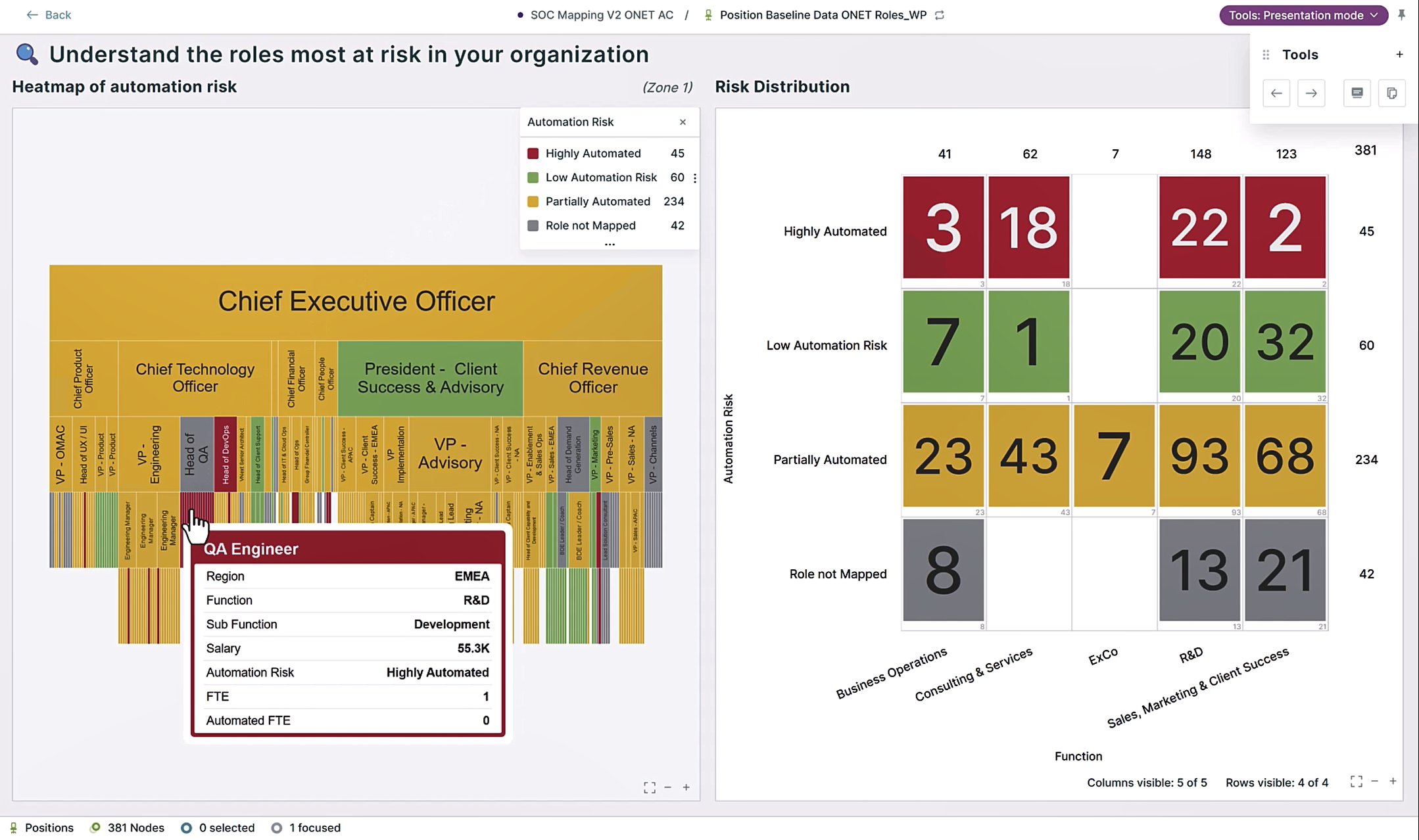
So, how do you produce these heatmaps in Orgvue? Firstly, you need to visualize the organizational structure as it is today (below left), then map individual roles by dragging dropping them onto the relevant benchmark roles as listed below right.
For example, you might map a head of demand generation role to a marketing research specialist benchmark role, which would give you an indication of how this role might change in the future.
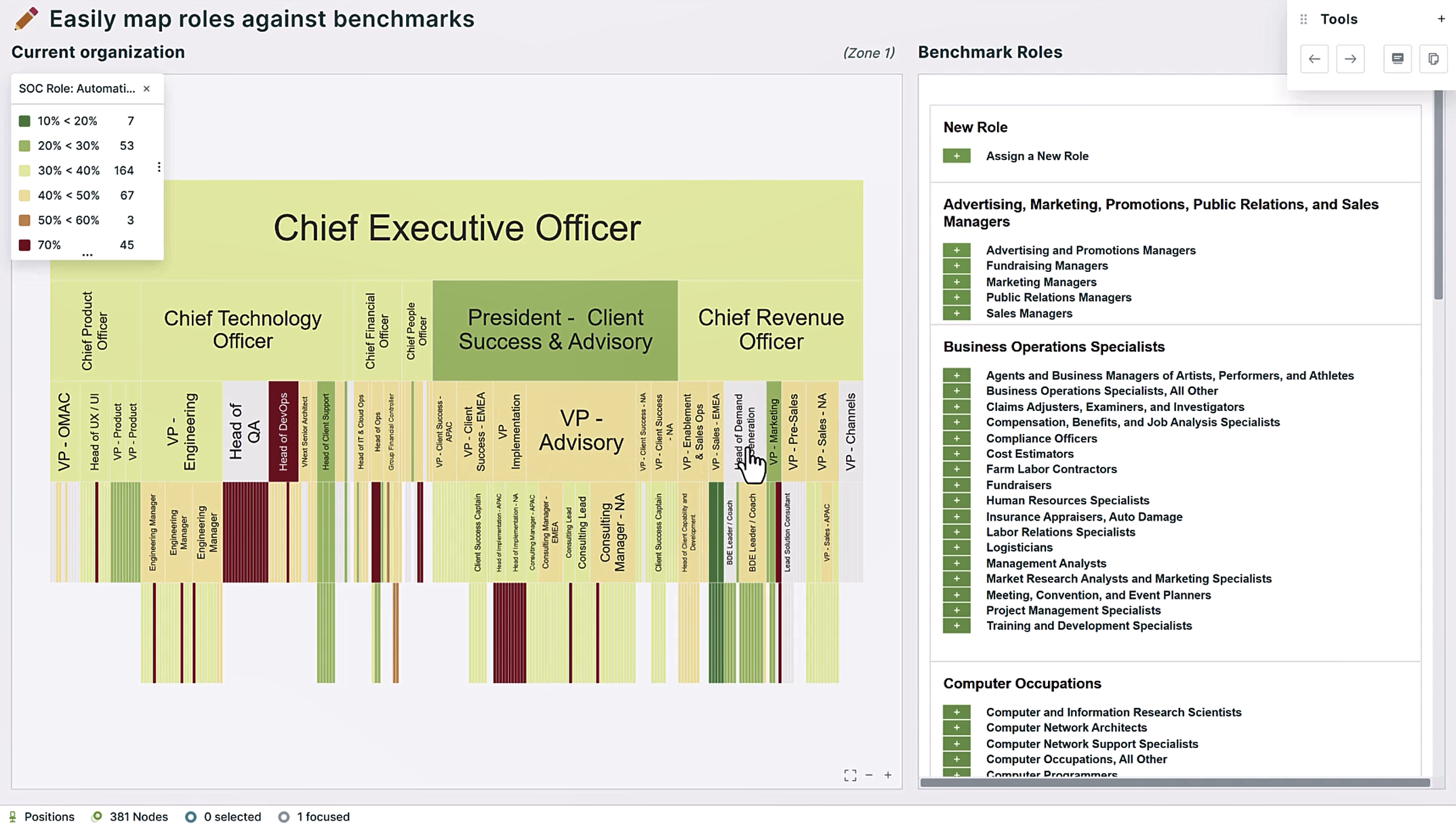
Step 2: Detailed analysis
If rapid assessment splashes color on the entire organization to highlight roles ripe for automation, then detailed analysis looks more closely at the specific of those roles and the activities within them to determine how best to redistribute activities and whether any supporting activities will need to be introduced.
Once you get into the detail, you can pick apart and restructure roles, restructure teams, and in time restructure the organization to make effective use of AI.
How this is done in Orgvue
Before you can analyze the work being across different departments, you’ll need to first collect activity data for all roles in the organization. Orgvue makes this easy with online surveys tailored to each role, so employees can fill out their individual tasks and the time they spend on each (below left). These responses then flow into Orgvue in real time.
Once you have this data, you can begin to look at the work in detail, and how it might be affected by AI, without needing to know who’s doing it. First, you need to set some rules and logic against which to assess each activity. For example, is an activity a physical or mental task; is it repetitive or variable; and is it interactive or independent?
Once you’ve tagged each activity with these rules and applied a few assumptions, you can say that if an activity is mental, repetitive and independent, then it’s a candidate for automation (below right). You can then analyze the time and cost given to these activities and make some assumptions to model the potential improvements if AI was assigned to them.
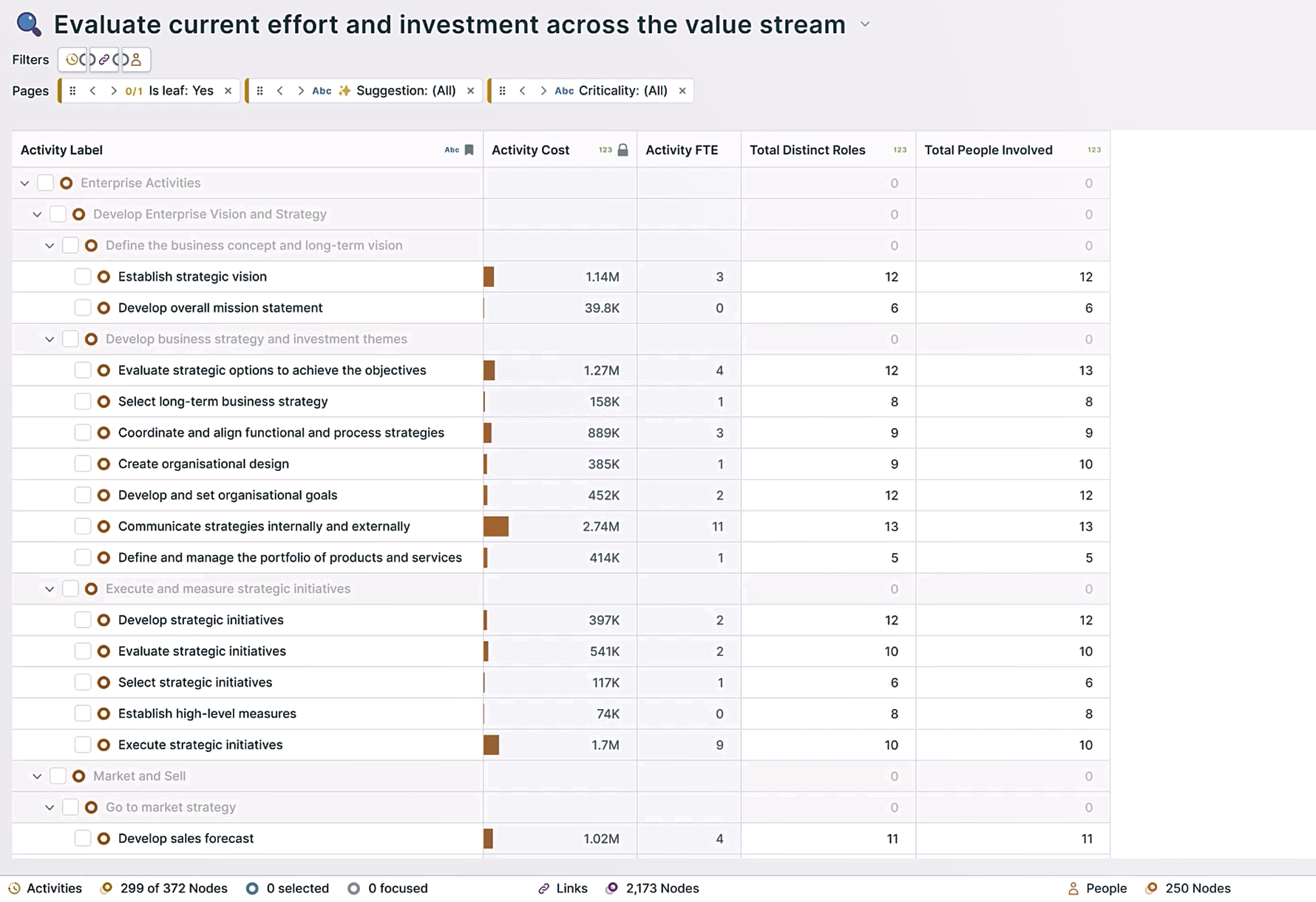
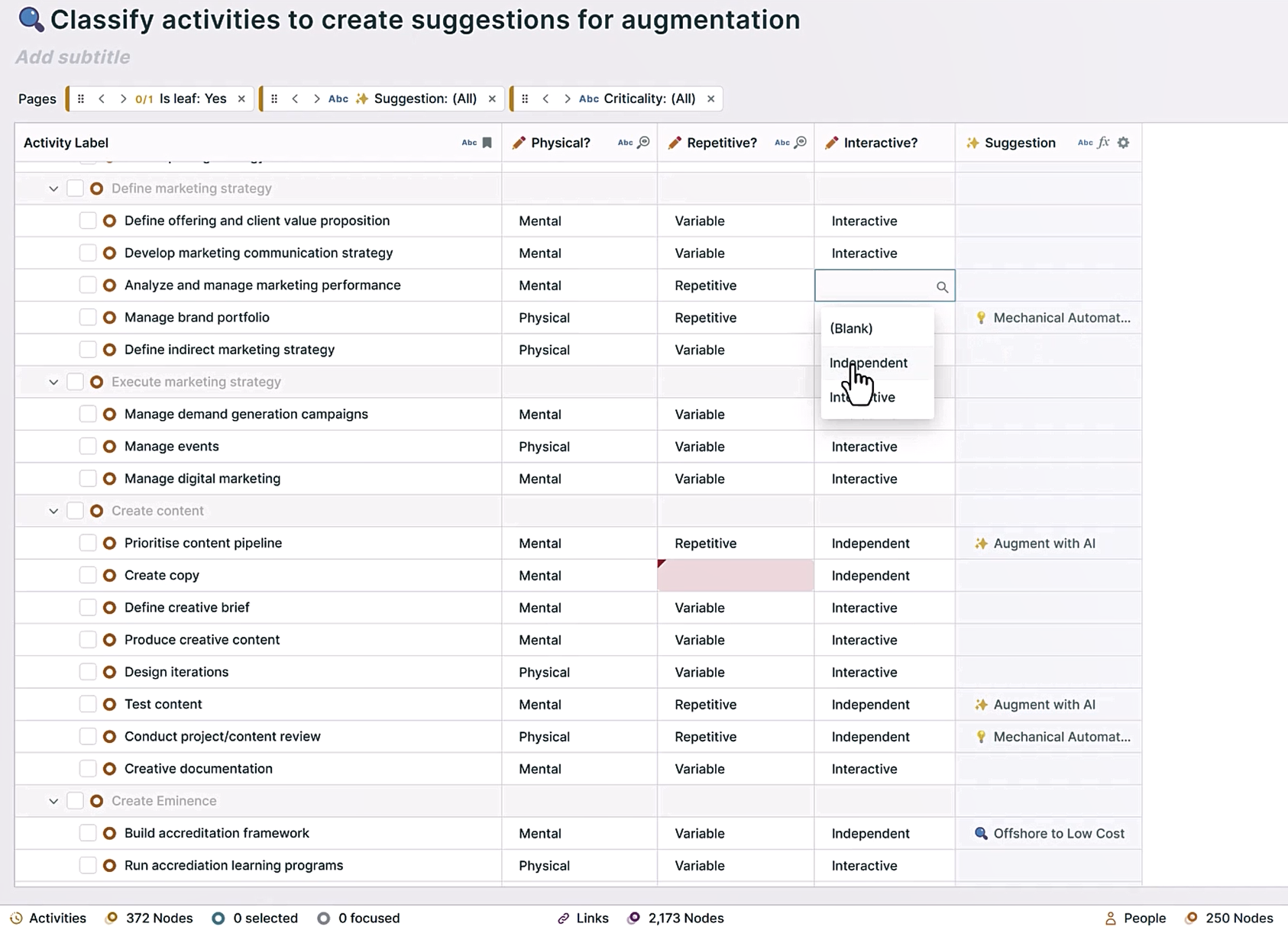
The next step is to map these activities back to individuals to see the percentage impact of automation on particular roles and positions. If the impact on an individual’s current workload is significant, you can time-phase when you expect these changes to take place, so that individuals can be re-tasked or upskilled into more valuable work.
It could also be that some tasks will require more time from the individual as they work alongside AI. Or it may create entirely new activities to support AI and replace some of the outgoing work.
Step 3: Design and implementation
Having understood the organizational impact of AI in detail with closer analysis, you’re ready to design your organization’s future state with scenario modeling. In modeling a new organizational structure, you’ll be able to see the impact on headcount, team composition, roles, and cost.
It will also help you anticipate where net new work and new, interesting opportunities are likely to be created, as people are freed up to do higher-value work by handing over more routine tasks to AI?
How this is done in Orgvue
Once your detailed analysis is complete, you can bring all of the different impacts on activity and roles together to see what the current headcount is in the organization and what the future headcount is expected to be for each of the different roles (below left).
You can then use this aggregated information to model what-if scenarios for different roles and departments across the organization. For example, you could look at the marketing leadership team and create a scenario in a safe sandbox environment without change your underlying organizational data (below right).
You’ll be able to see what the target FTE is as a result of the work and roles that will be affected by AI in the future. You can then compare this to the current FTE to see where the marketing organization sits today and whether you’re over or under where you expect to be in the future.
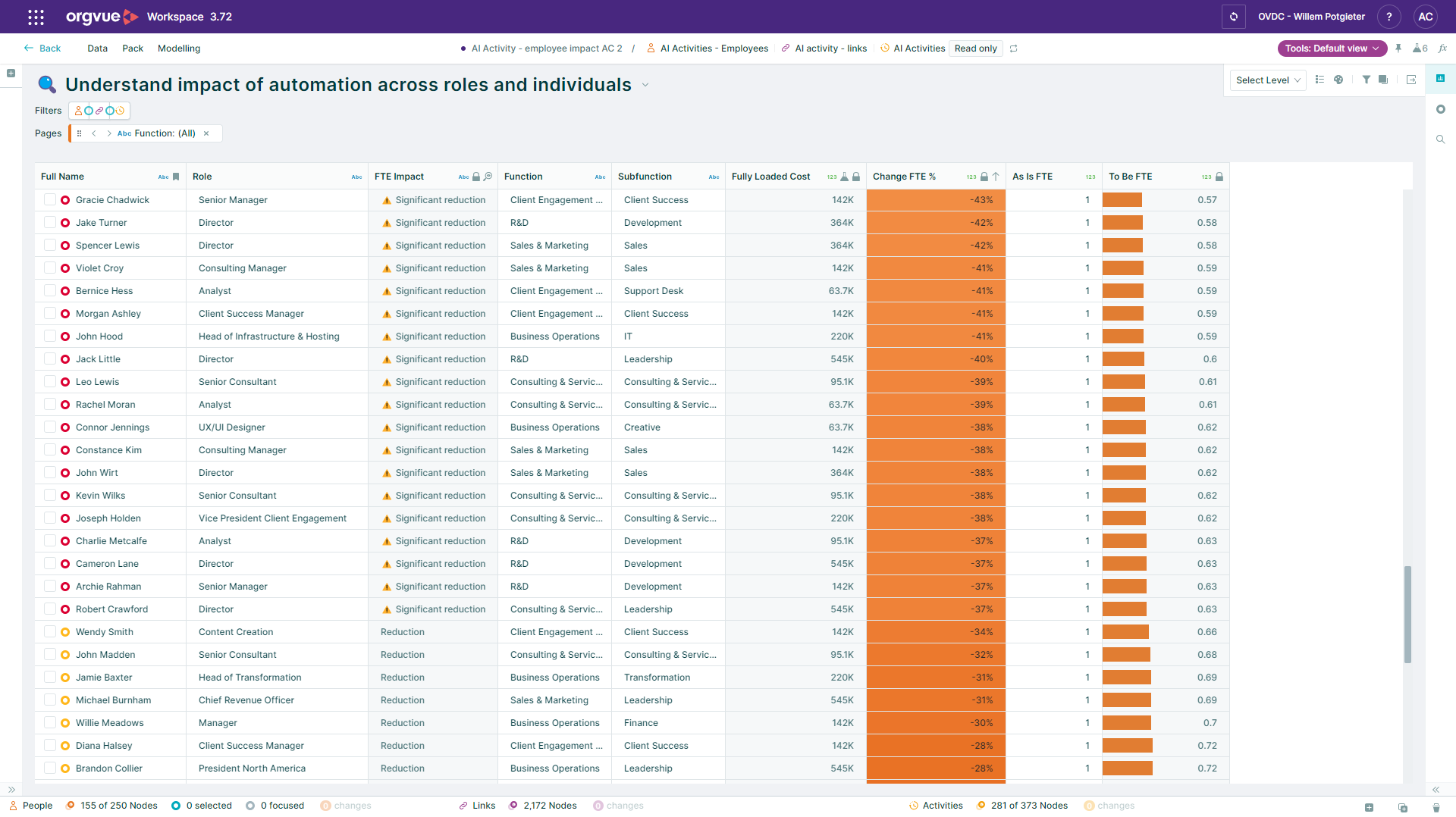
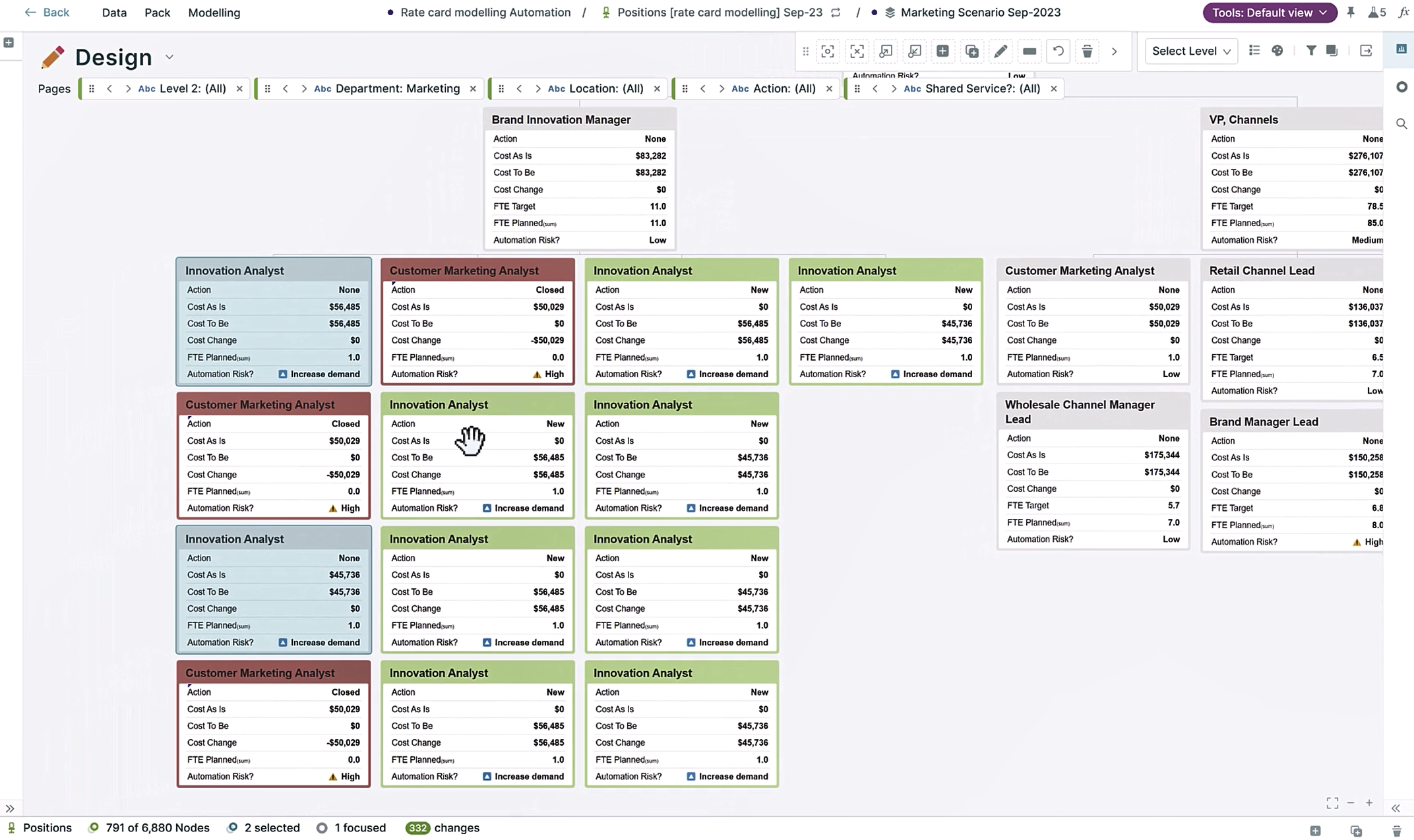
Orgvue can then generate impact assessments based on scenario models, so you can see the cost effects of reducing roles or creating net new roles (below left).
You can also roll up the impact on headcount and cost difference per role, which can be used as an action plan to effect the changes you approve (below right).
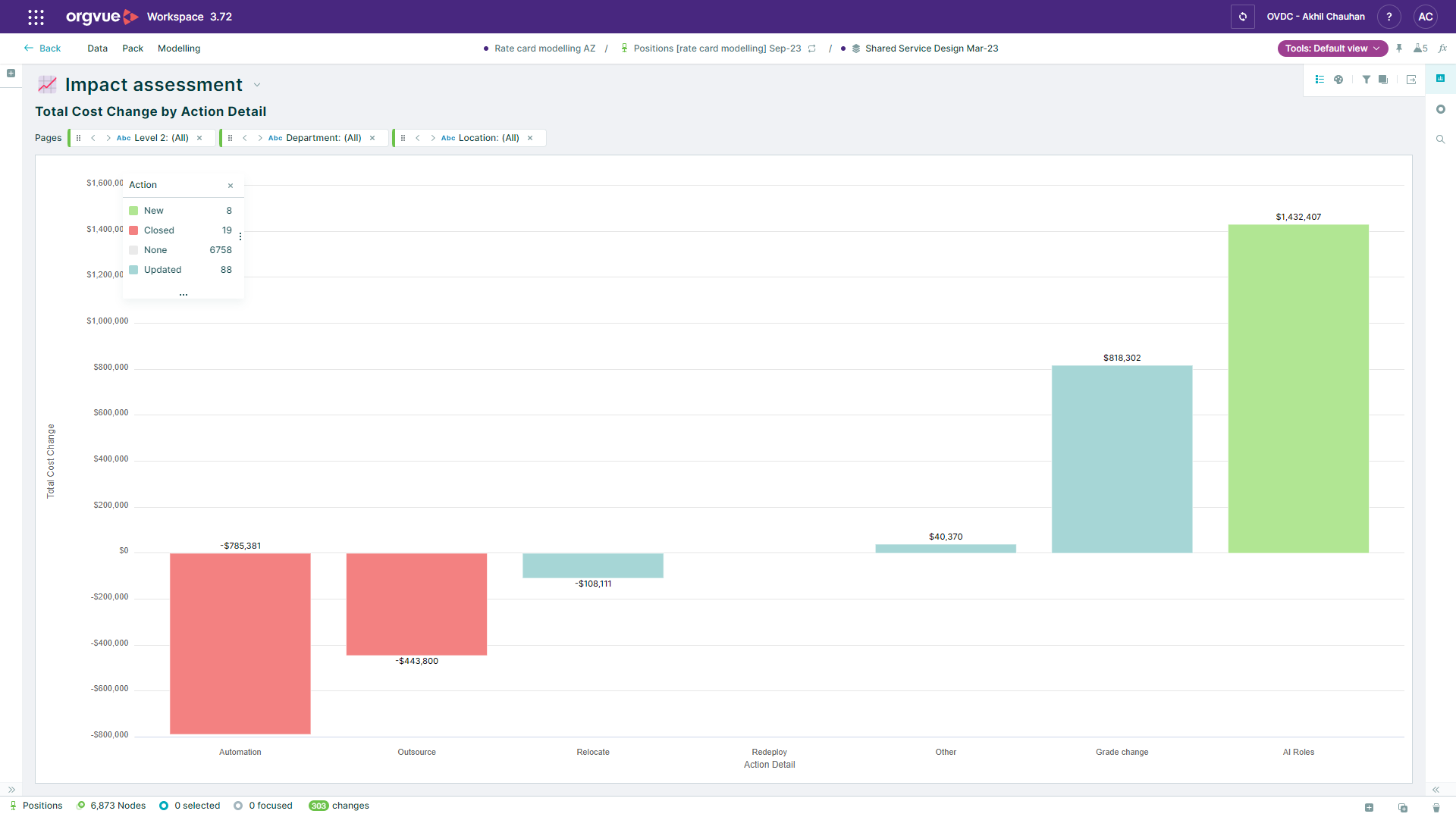
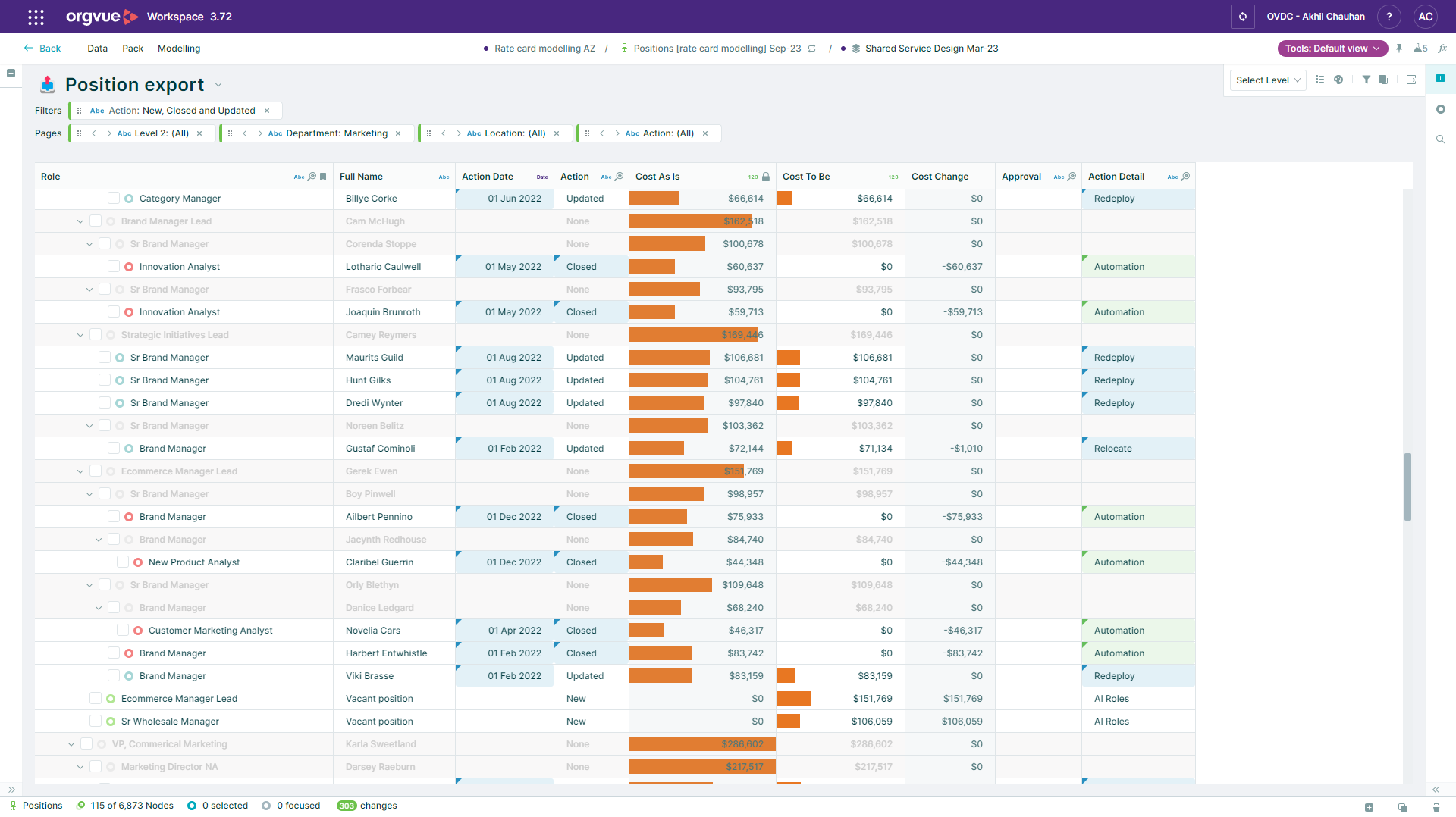
Capitalize on business growth by embracing new jobs and new work
AI’s impact on jobs will be widespread, so will its contribution to the world economy. New technology will create new jobs and new opportunities for employees as work is redistributed and roles are restructured. As we’ve said, this will be a challenge to achieve but the benefit for organizations worldwide will be transformational.
There are three simple steps that your organization can begin with to prepare for the impact of AI on the workforce. Start by bringing together data, use it to identify hotspots for automation, and continuously monitor for future opportunities.
Orgvue can help you quickly benchmark roles against publicly available data to highlight workforce transformation opportunities using AI. You can go on to analyze those opportunities in accurate detail, and then model how your workforce will adapt to change.
In the next article in this series, we’ll look at using Orgvue to compare skills demand and supply, both today and in the future, so you can uncover where there may be skills gaps and how you can use AI to close those gaps.
AI and workforce transformation
Redefining the work and skills required for your business to thrive.
More resources
